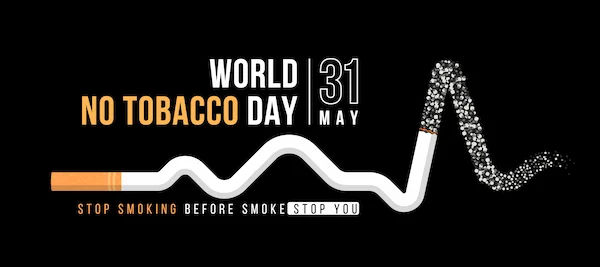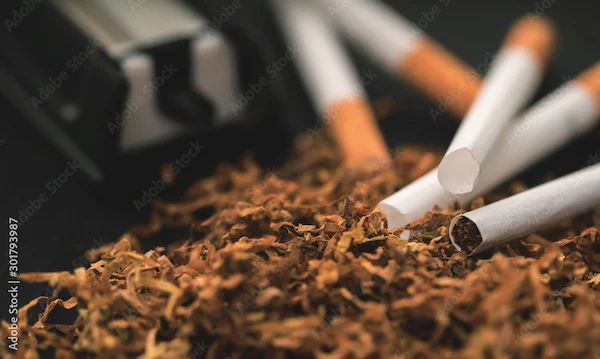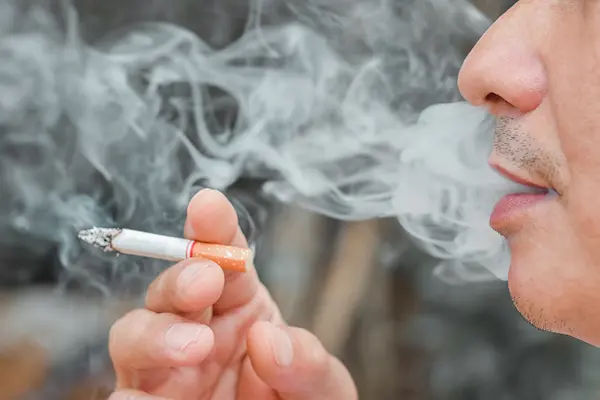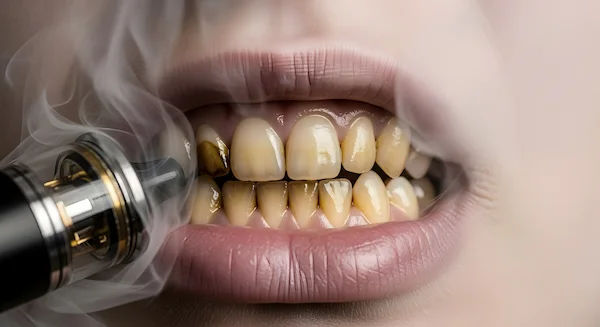Guide to Do You Know There Are 4000 Chemicals Single Puff
Discover the shocking truth about the over 7,000 toxic chemicals, including rat poison and embalming fluid, released in every puff of cigarette smoke and the severe health damage they cause.

_0.webp?tr=q-80,f-webp,w-350,dpr-2,c-at_max 700w)
Introduction
A single puff of cigarette smoke may feel insignificant, but it delivers a complex mixture of chemicals deep into your lungs and bloodstream within seconds. You’ve likely heard that there are “4,000 chemicals in a single puff” of tobacco smoke; today, experts estimate there are more than 7,000. Hundreds are toxic, and dozens are known carcinogens. This guide translates the science into practical health advice you can use. We’ll explain where the “4,000 chemicals” number comes from, what’s inside a puff, how it affects your body in minutes to hours, and how secondhand and even thirdhand smoke exposes loved ones. We’ll also compare a single puff of cigarette smoke with a single puff of vape aerosol, tackle common myths, and outline easy steps to protect your home and plan a quit strategy. You’ll find evidence-based examples, quick takeaways, and sources from organizations like the CDC, FDA, WHO, and Johns Hopkins. Whether you’re curious, concerned, or ready to change, this is your practical, science-backed guide to the chemicals in a single puff and what to do next.
What the top-ranking pages cover and what’s missing?
A quick scan of highly ranked pages on the chemicals in cigarette smoke reveals consistent themes. Authoritative sources such as the CDC, FDA, WHO, National Cancer Institute (NCI), American Lung Association (ALA), Cancer Research UK, and Smokefree.gov emphasize three pillars:
(1) scale—the number of chemicals (historically “4,000,” now “over 7,000”),
(2) harm—hundreds toxic and about 70 known to cause cancer, and
(3) exposure—smokers and bystanders (secondhand smoke) face similar toxins in different concentrations. FDA adds specificity by listing “Harmful and Potentially Harmful Constituents” (HPHCs), grouping chemicals into categories such as volatile organic compounds, carbonyls (e.g., formaldehyde), gases (e.g., carbon monoxide), metals, tobacco-specific nitrosamines (TSNAs), and polycyclic aromatic hydrocarbons (PAHs).
Cancer-focused pages (NCI, Cancer Research UK) prioritize carcinogens and mechanisms—DNA damage, inflammation, impaired repair, and promotion of tumor growth—while public health pages (CDC, WHO, ALA) highlight secondhand smoke dangers, policy measures, and quitting resources. Comparisons to vaping vary: some state that e-cigarettes generally contain fewer known toxicants than cigarettes but are not harmless; Johns Hopkins notes thousands of previously unidentified compounds in vape aerosol, underscoring uncertainty. Common headings include “What’s in cigarette smoke?”, “How tobacco smoke causes disease,” “Secondhand smoke,” “What’s in e-cigarette aerosol?”, “Health effects,” and “How to quit.”
What’s often missing is a zoom-in on the micro-exposure of a single puff—how it behaves as a “chemical micro-dose” that still meaningfully shifts heart rate, blood vessel function, and airway reactivity within minutes. Also under-discussed: thirdhand smoke (toxic residues on surfaces), chemical synergies (how mixtures multiply harm beyond individual components), and practical home strategies that go beyond “open a window” (which doesn’t remove gases). This guide fills those gaps while keeping the best of the top pages: clear facts, actionable steps, and verified sources.
The science of a single puff: what’s inside
A single puff of a cigarette is an aerosol burst of ultrafine particles and gases created by burning and smoldering tobacco, paper, and additives at temperatures up to 900°C. Chemically, that puff contains a cocktail of:
- Nicotine: the addictive alkaloid that rapidly crosses the lung-blood barrier, triggering dopamine release and short-term stress hormone spikes.
- Tar: a sticky mixture of particles carrying many carcinogens and irritants that adhere to the airways and deep lung surfaces.
- Gases: carbon monoxide (CO), nitrogen oxides, hydrogen cyanide, and ammonia.
- Volatile organic compounds (VOCs): benzene, toluene, 1,3-butadiene.
- Carbonyls: formaldehyde, acetaldehyde, acrolein—potent airway irritants and carcinogens.
- PAHs (e.g., benzo[a]pyrene): formed by incomplete combustion; many are carcinogenic.
- Tobacco-specific nitrosamines (TSNAs): such as NNK and NNN—among the strongest carcinogens in tobacco.
- Metals: cadmium, lead, arsenic; and even radioactive polonium-210 in trace amounts.
Particle size matters. Much of the particulate in a single puff is ultrafine (less than 0.1 micrometer), allowing deep penetration into the alveoli (the lung’s gas exchange units) and rapid systemic absorption of chemicals. These ultrafine particles act as “chemical delivery vehicles,” carrying carcinogens and irritants across the delicate lung lining. This is why even one puff can alter vascular tone and airway function.
A unique insight: People often think of harm per cigarette, but the body’s response scales to each puff. Typical smokers take 10–15 puffs per cigarette; even one or two puffs can prime the nervous system (nicotine), vasculature (CO and oxidative stress), and airway defenses (acrolein) in a way that increases cravings and lowers comfort thresholds. That’s one reason “just a puff” can reignite dependence.
Consult a Top General Physician
Where “4,000 chemicals” comes from—and the updated number?
The “4,000 chemicals” estimate became a public health shorthand in the late 20th century to convey the complexity of tobacco smoke. As analytical chemistry advanced, researchers cataloged more constituents, and the accepted figure rose to “over 7,000 chemicals,” with hundreds known toxins and approximately 70 carcinogens. The FDA maintains a formal list of Harmful and Potentially Harmful Constituents (HPHCs), and while not exhaustive of every chemical in a puff, it reflects chemicals of highest concern. WHO echoes these estimates globally and ties them to disease burden statistics—tobacco causes more than 8 million deaths annually worldwide, including around 1.3 million from secondhand smoke.
Important context:
- Numbers are conservative. Analytical chemists continue to discover new trace compounds and reaction products formed during burning or aging of smoke.
- Concentrations vary. The exact mix in a single puff depends on brand, additives, filter design, how deeply you inhale, and burn temperature. “Light” or “low tar” descriptors don’t reduce toxin intake because smokers compensate by puffing harder or deeper.
- Smoke evolves. As smoke cools and travels from the tip through the cigarette and into the lungs or room air, gases and particles change phase or react, forming additional compounds.
Key takeaway: Whether you cite 4,000 or 7,000+, a single puff is chemically dense. The updated science only strengthens the message—there is no safe level of exposure to tobacco smoke..
What a single puff does to your body in minutes to hours?
Within seconds of a single puff, nicotine reaches the brain, binding to receptors that release dopamine. Your heart rate and blood pressure may rise briefly due to catecholamine release. Carbon monoxide from the puff binds to hemoglobin with more than 200 times the affinity of oxygen, transiently reducing your blood’s oxygen-carrying capacity. In blood vessels, cigarette smoke constituents impair endothelial function—the ability of arteries to dilate—within minutes; this is a primary reason even brief exposure elevates cardiovascular risk.
In the airways, carbonyls like acrolein and formaldehyde irritate the lining, slow cilia (the “brooms” that clear mucus), and amplify inflammatory signaling. If you have asthma, this can trigger bronchospasm. If you’re otherwise healthy, you may still feel throat scratchiness or mild cough. Repeated single puffs—in social settings, for example—can accumulate into meaningful exposure, priming addiction and reducing cardiorespiratory resilience over time.
Evidence snapshot:
- Cardiovascular: The U.S. Surgeon General and the American Heart Association report that even brief exposure to cigarette smoke—active or secondhand—produces measurable endothelial dysfunction and increases the risk of acute coronary events in susceptible individuals.
- Respiratory: Acrolein is a powerful ciliotoxic agent, impairing mucus clearance and increasing susceptibility to infections and chronic bronchitis symptoms.
- Brain: Nicotine’s rapid spike reinforces reward pathways, explaining why “just one puff” can trigger relapse after a quit attempt.
Unique insight: Think of a puff as a “chemical micro-stressor.” Most healthy bodies cope transiently, but the cost is cumulative. If you’re training for fitness, trying to manage blood pressure, or recovering from respiratory infection, even occasional puffs can knock you off course.
If you develop persistent cough, chest tightness, wheeze, or breathlessness beyond two weeks, consult a doctor online with Apollo 24|7 for further evaluation. If you’re managing conditions like diabetes or high cholesterol as you plan to quit, Apollo 24|7 offers a convenient home collection for lab tests such as HbA1c and lipid profile to help track your health improvements.
The worst offenders in a puff: a closer look
Nicotine
- Role: Addictive driver; increases heart rate and blood pressure transiently.
- Long-tail keyword: how much nicotine in one puff.
- Insight: Nicotine isn’t the main carcinogen, but without it, continued exposure to other toxins wouldn’t occur.
Carbon monoxide (CO)
- Role: Binds hemoglobin; reduces oxygen delivery; strains heart and brain.
- Unique angle: Even a single puff can measurably raise CO levels on breath analyzers in sensitive individuals.
Tar (particle phase)
- Role: Carrier of many carcinogens; stains lungs; cilia toxicity.
- LSI: tar nicotine carbon monoxide facts.
Formaldehyde, acetaldehyde, acrolein (carbonyls)
- Role: Irritation, inflammation, DNA-protein crosslinks; acrolein impairs lung defenses.
- LSI: acrolein and formaldehyde in smoke.
Benzene, 1,3-butadiene (VOCs)
- Role: Blood toxicants; linked to leukemia risk.
- LSI: benzene in cigarette smoke.
PAHs (e.g., benzo[a]pyrene)
Role: Potent carcinogens; DNA adducts promote mutations.
TSNAs (NNK, NNN)
Role: Tobacco-specific carcinogens formed during curing/combustion; strongly linked to cancers of lung and head/neck.
Metals (cadmium, lead, arsenic) and polonium-210
Role: Oxidative stress, kidney and nerve toxicity; polonium-210 adds a radioactive component.
Unique insight: Chemical synergy matters. Many toxicants amplify each other—irritants inflame tissue, making it more vulnerable to carcinogens; CO reduces oxygenation, impairing repair. The mixture is more dangerous than the sum of parts.
Secondhand and thirdhand smoke: one puff shared with everyone
Secondhand smoke is the combination of smoke from the burning tip (sidestream) and the smoke you exhale (mainstream). Even if you only take a single puff, sidestream smoke is produced continuously from the lit cigarette and is rich in certain toxicants—often at higher concentrations than in inhaled smoke—because it burns cooler and less completely. In children, secondhand smoke exposure increases risk of ear infections, asthma attacks, pneumonia, and sudden infant death syndrome (SIDS). In adults, brief exposures can trigger angina or arrhythmias in those with heart disease.
Thirdhand smoke is the residue of chemicals that settle onto surfaces—sofas, car seats, carpets, clothing—and later re-emit as gases or react to form new pollutants. Nicotine on surfaces can react with indoor oxidants to form carcinogenic nitrosamines. This is why a room can “smell like smoke” days later and why cleaning doesn’t fully remove risk. Babies and toddlers are particularly vulnerable due to hand-to-mouth behavior and time spent close to surfaces.
Practical tips:
- Make your home and car 100% smoke-free. Opening windows, using fans, or air purifiers cannot eliminate gases like carbon monoxide or many VOCs effectively.
- If friends or family smoke, agree on an outdoor-only policy away from doors and windows.
- Provide jackets for smoking that stay outside to limit thirdhand residue indoors.
- For renters or buyers, ask about previous smoking and consider deep cleaning and repainting before move-in.
There is no safe level of exposure to cigarette smoke. If you have vulnerable family members—pregnant individuals, children, older adults, people with asthma—protect them from even brief exposures.
Vaping vs smoking: what’s in a single puff of vape aerosol?
E-cigarettes don’t burn tobacco, so they generally produce fewer combustion-related chemicals than cigarettes. But fewer doesn’t mean safe. A single puff of vape aerosol contains nicotine (in most products), propylene glycol and glycerin (solvents), flavoring chemicals, carbonyls (formed by heating), and metals like nickel, tin, and lead from device components. Johns Hopkins researchers reported thousands of previously unreported chemical compounds in e-cigarette aerosols, many uncharacterized, underscoring the complexity and unknown risks of a single puff from vaping devices.
Key comparisons:
- Cigarettes: 7,000+ chemicals; hundreds toxic; ~70 carcinogens; tar and CO central to harm.
- Vapes: Fewer known carcinogens; no combustion tar or CO; but presence of carbonyls (formaldehyde, acrolein), volatile chemicals, metals, and potential exposure to diacetyl-like flavorants linked to bronchiolitis obliterans in workers exposed to high levels.
- Unknowns: Chemical reactions between flavorings and solvents during heating create new compounds; many remain unidentified, and long-term inhalation safety is uncertain.
- Unique insight: For smokers switching to vaping as a quitting aid, public health agencies suggest a net reduction in certain toxicants may be possible if vaping fully replaces smoking. But dual use (alternating) still exposes you—and bystanders—to the chemicals from both. For non-smokers, starting to vape introduces addiction and chemical exposure risks with no health benefit.
If you plan to quit, discuss evidence-based methods like nicotine replacement therapy (patch, gum), prescription medicines, and behavioral support with a clinician. Apollo 24|7 can help you build a tailored quit plan and monitor progress.
Myths vs facts about “just one puff”
- Myth: One puff can’t hurt.
- Fact: Even brief exposure impairs blood vessel function and airway defenses within minutes; there is no safe level of exposure to tobacco smoke.
- Myth: Filters and “light” cigarettes make a single puff safer.
- Fact: Filters change feel, not toxicity. Smokers compensate by inhaling more deeply, negating perceived benefits.
- Myth: Smoking near a window protects others.
- Fact: Gases and ultrafine particles spread throughout rooms; sidestream smoke escapes and lingers as thirdhand residue.
- Myth: Vaping is just water vapor.
- Fact: Vape aerosol is a chemical mixture with carbonyls, metals, and thousands of compounds—many not fully identified.
- Myth: A single social puff won’t trigger cravings.
- Fact: Nicotine’s rapid brain effect can reactivate dependence pathways, especially after a quit attempt.
Unique insight: The “first puff” after a break is often the strongest training signal for the brain’s reward system. If you’ve quit, treat “no first puff” as your single most powerful relapse prevention rule.
Protecting your home and planning to quit today
Make your environment your ally:
- Home and car: Implement a no-smoking, no-vaping policy. Place reminders on doors and dashboards. Provide a designated outdoor area far from entrances, with a jacket that stays outside to reduce thirdhand smoke on clothes.
- Air quality: Air purifiers can reduce particles but not gases like CO, VOCs, or many carbonyls. Don’t rely on them as a fix.
- Social cues: Replace smoking triggers—coffee, breaks, commutes—with alternative rituals: a brisk 3-minute walk, deep breathing, sugar-free gum, or texting a quiet buddy.
Plan a 24-hour quit sprint:
- Morning: Remove cigarettes, lighters, ashtrays. Start nicotine replacement (patch + gum/lozenge combo improves success).
- Afternoon: Hydrate, have healthy snacks, change routines around usual trigger times.
- Evening: Short exercise, early shower to reduce sensory triggers, cue calming music, and prepare a “craving kit” (gum, water bottle, note with reasons to quit).
- Overnight: Nicotine patch helps smooth cravings. If you wake and crave, slow breaths and a glass of water usually pass the urge.
Support:
- Schedule a brief consult with a clinician to tailor NRT dosing and consider prescriptions like varenicline or bupropion. If your condition does not improve after trying these methods, book a physical visit to a doctor with Apollo 24|7.
- Track wins: Heart rate and blood pressure start to improve within 20 minutes; CO levels drop within hours; smell and taste improve within days.
If you have chronic conditions (e.g., diabetes, hypertension), quitting offers outsized benefits. Apollo 24|7 offers a convenient home collection for tests like HbA1c and lipid profile to document progress as you reduce exposure to smoke chemicals.
How scientists measure chemicals in a puff?
Researchers use smoking machines that standardize puff volume, duration, and frequency to capture mainstream smoke. Analytical techniques include gas chromatography–mass spectrometry (GC–MS) for VOCs and PAHs, high-performance liquid chromatography (HPLC) for carbonyls (after derivatization), and inductively coupled plasma mass spectrometry (ICP-MS) for metals. Carbon monoxide is tracked with gas analyzers; nicotine can be measured in smoke or via biomarkers (cotinine) in blood, saliva, or urine. Standards (e.g., ISO, Health Canada Intense) define puffing regimens, though real-world behavior often exceeds machine yields as smokers compensate.
Why this matters: When you read “one puff contains X,” realize values are approximations that vary by product and behavior. The big picture remains: each puff is a dense, reactive chemical cloud that affects multiple organ systems. Regulators focus on HPHCs because they’re both common and harmful . The precision in labs underscores the imprecision of real life—most people inhale more deeply and more often than machines simulate, especially with “light” cigarettes.
Curious about your own exposure? Clinicians sometimes order cotinine testing to confirm nicotine exposure during pregnancy or for pre-surgical planning. If lab tests are needed as part of your health plan, Apollo 24|7 can advise and arrange convenient options where appropriate.
Environmental footprint per puff
Beyond personal health, every single puff contributes to environmental harm. Cigarette butts—made of plastic cellulose acetate filters—are the most littered item worldwide. With each puff (and each butt), toxic chemicals leach into soil and waterways, harming wildlife. Sidestream smoke and exhaled mainstream smoke add fine particulates and hazardous gases to indoor and outdoor air.
Filters don’t protect you; they protect brand image while generating microplastic waste. Outdoor smoking areas concentrate toxins in small spaces where workers—servers, cleaners, security staff, are exposed. The true cost of a puff includes cleanup, pollution, and healthcare spending on smoke-related illnesses. Choosing a smoke-free lifestyle is not just self-care; it’s a pro-environment choice that reduces chemical load on your community.
Special risks: pregnancy, kids, pets, and chronic conditions
- Pregnancy: A single puff exposes the fetus to nicotine (which constricts blood vessels), CO (reduces oxygen delivery), and other toxins. Repeated exposure increases the risk of low birth weight, preterm birth, and complications.
- Infants and children: Their lungs and immune systems are still developing. Secondhand and thirdhand smoke exposures increase risks of SIDS, ear infections, bronchitis, pneumonia, and worsened asthma.
- Pets: Cats exposed to smoke have higher rates of lymphoma; dogs have elevated risks of nasal and lung cancers; birds are highly sensitive to airborne toxins.
- Chronic conditions: Asthma can flare with even brief exposure. Heart disease patients can experience symptoms after short encounters with smoke. People with diabetes face compounded vascular risks, making “just a puff” more consequential.
If you’re pregnant, have children at home, or live with chronic heart or lung disease, set a zero-tolerance rule for smoking indoors and in cars. If symptoms appear or worsen (persistent cough, wheeze, chest pain), consult a doctor online with Apollo 24|7 for timely guidance.
Conclusion
Whether we say 4,000 or 7,000+, the message is the same: a single puff is a dense chemical exposure with immediate and cumulative effects on your heart, lungs, and brain. That puff doesn’t stay with you alone—its sidestream and residues share chemicals with family, friends, and pets. Compared with cigarettes, a single puff of vape aerosol lacks tar and carbon monoxide but still contains nicotine, carbonyls, metals, and thousands of compounds we’re only beginning to characterize. There is no safe level of exposure to tobacco smoke, and the safest approach is a 100% smoke-free lifestyle and environment.
The good news: your body begins to recover within minutes of stopping. Protect your home and car, swap triggers for healthier rituals, and use proven quit aids. If you’ve tried before, you can try again—with better support and a smarter plan. For personalized guidance, consult a clinician; Apollo 24|7 can help you build a quit strategy, adjust medications, and monitor progress with convenient services. Your next breath can be cleaner than your last—start today, and let your next puff be fresh air.
Consult a Top General Physician
Consult a Top General Physician

Dr. Rajib Ghose
General Physician/ Internal Medicine Specialist
25 Years • MBBS
East Midnapore
VIVEKANANDA SEBA SADAN, East Midnapore

Dr. Aakash Garg
Gastroenterology/gi Medicine Specialist
12 Years • MBBS, DNB (Medicine), DrNB (Gastroentrology).
Bilaspur
Apollo Hospitals Seepat Road, Bilaspur
(150+ Patients)

Dr P Jagadeesha Chandra
General Physician/ Internal Medicine Specialist
37 Years • MBBS, MD
Bengaluru
Apollo Hospitals Jayanagar, Bengaluru

Dr. Abhishek Ranjan
General Practitioner
4 Years • MBBS
Kolkata
VDC Clinic, Kolkata

Dr. Nilotpal Mitra
General Physician/ Internal Medicine Specialist
20 Years • MBBS, PGDGM ( Geriatric Medicine), ACMDC (an Advance course in Diabetes and cardiovascular diseases from PHFI and WHF )
Kolkata
MCR SUPER SPECIALITY POLY CLINIC & PATHOLOGY, Kolkata
(25+ Patients)
Consult a Top General Physician

Dr. Rajib Ghose
General Physician/ Internal Medicine Specialist
25 Years • MBBS
East Midnapore
VIVEKANANDA SEBA SADAN, East Midnapore

Dr. Aakash Garg
Gastroenterology/gi Medicine Specialist
12 Years • MBBS, DNB (Medicine), DrNB (Gastroentrology).
Bilaspur
Apollo Hospitals Seepat Road, Bilaspur
(150+ Patients)

Dr P Jagadeesha Chandra
General Physician/ Internal Medicine Specialist
37 Years • MBBS, MD
Bengaluru
Apollo Hospitals Jayanagar, Bengaluru

Dr. Abhishek Ranjan
General Practitioner
4 Years • MBBS
Kolkata
VDC Clinic, Kolkata

Dr. Nilotpal Mitra
General Physician/ Internal Medicine Specialist
20 Years • MBBS, PGDGM ( Geriatric Medicine), ACMDC (an Advance course in Diabetes and cardiovascular diseases from PHFI and WHF )
Kolkata
MCR SUPER SPECIALITY POLY CLINIC & PATHOLOGY, Kolkata
(25+ Patients)
More articles from Smoking Cessation
Frequently Asked Questions
How many chemicals are in a single puff of a cigarette?
Modern estimates cite over 7,000 chemicals in cigarette smoke, with hundreds toxic and about 70 carcinogens. Earlier public health messaging often used “4,000 chemicals” to highlight the scale.
What are the most harmful chemicals in tobacco smoke?
Nicotine drives addiction; carbon monoxide reduces oxygen delivery; tar carries carcinogens; formaldehyde, acrolein, benzene, PAHs, and TSNAs contribute to cancer and lung damage.
Is one puff enough to cause health problems?
Even brief exposure can impair blood vessel function and irritate airways; in people with heart disease or asthma, short exposures can trigger symptoms. There is no safe level of exposure.
How does a single puff of vape aerosol compare to cigarette smoke?
Vaping generally exposes you to fewer combustion-related chemicals, but a single puff still delivers nicotine and thousands of compounds—including carbonyls and metals. It is not harmless.
What’s the best way to protect my family from secondhand and thirdhand smoke chemicals?
Make your home and car 100% smoke-free; don’t rely on open windows or air purifiers. Wash or leave smoking jackets outside. If symptoms persist or you need help quitting, consult a doctor online with Apollo 24|7.




